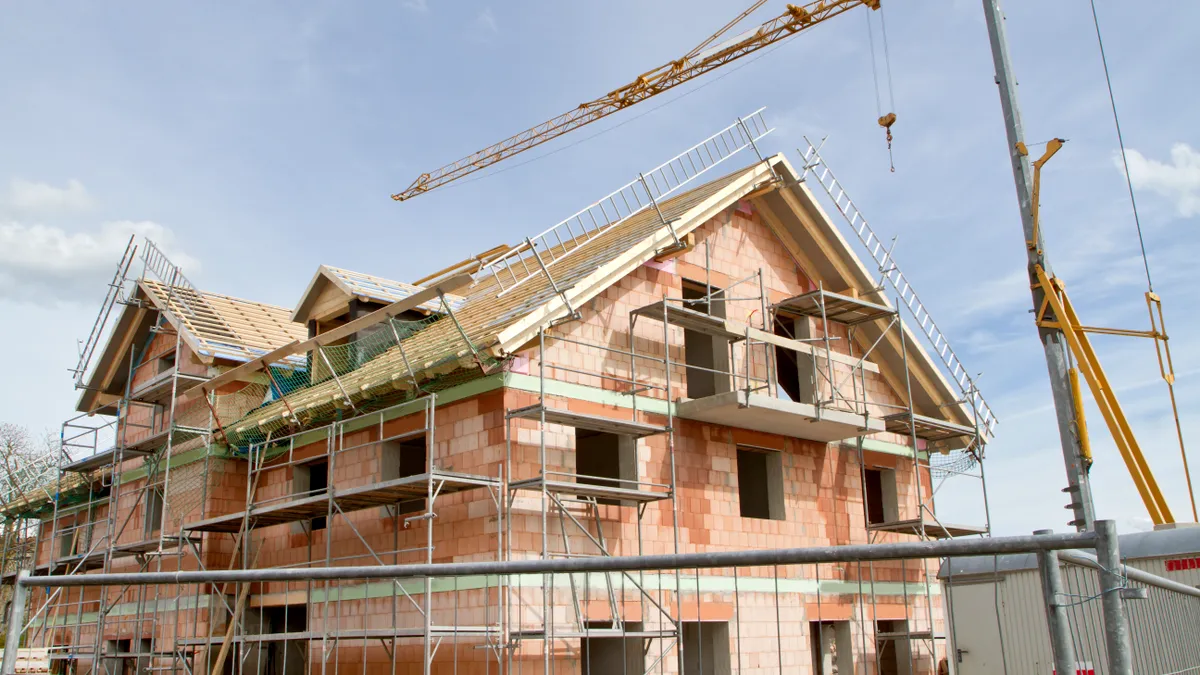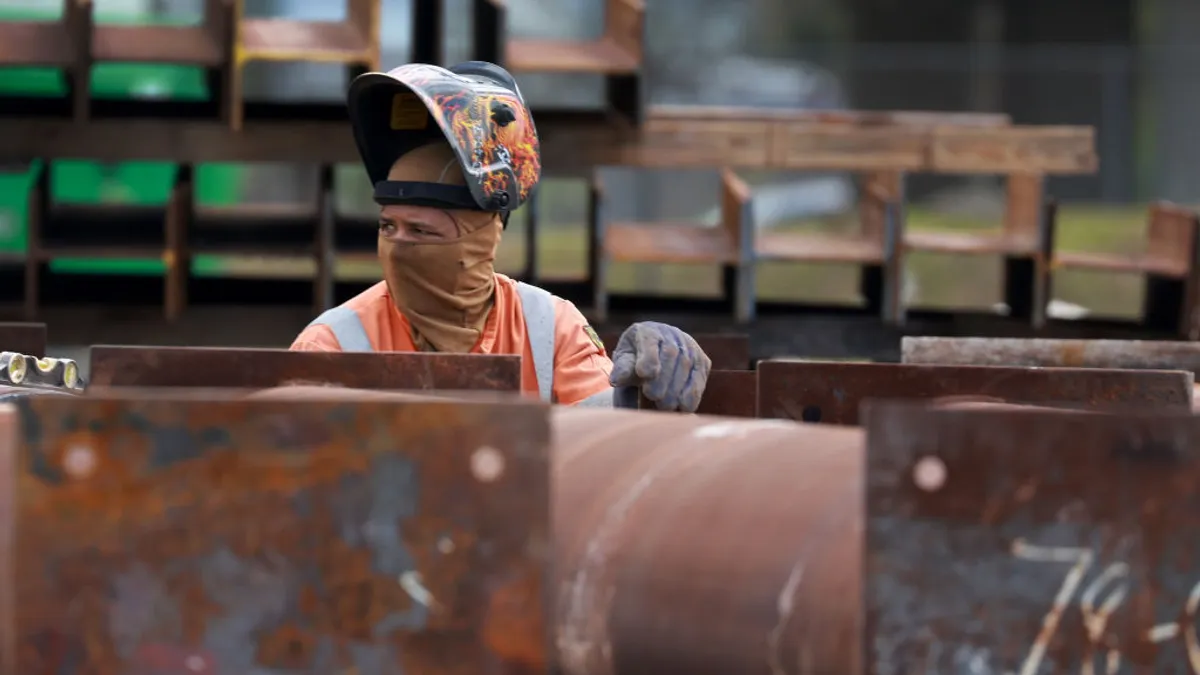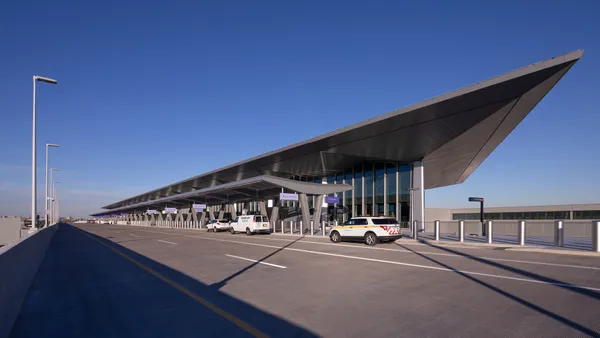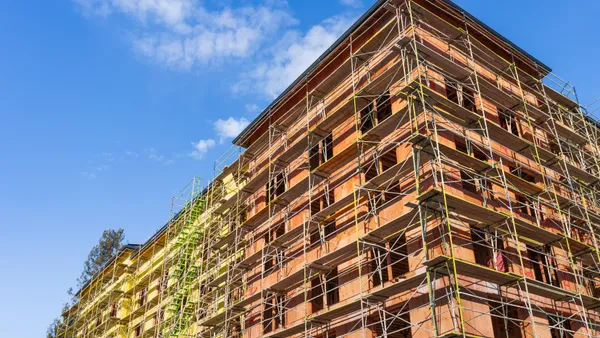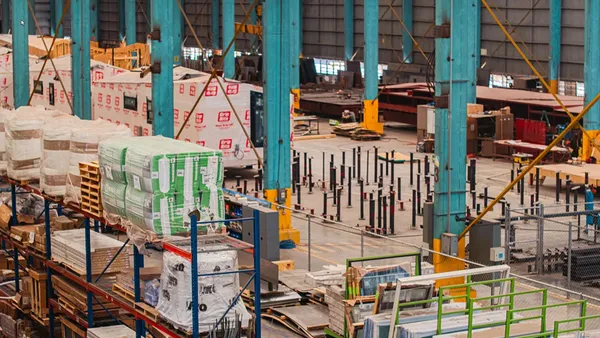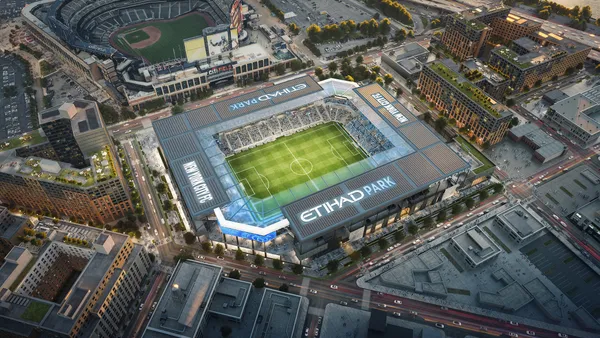Dive Brief:
- Dodge Data & Analytics reported Wednesday that the value of 2017 U.S. commercial and multifamily construction starts was nearly $195 billion, a decline of 7% from 2016. Last year's activity, however, was still 8% higher than in 2015.
- Of the top 10 markets Dodge tracks, seven saw declines: Chicago (-26%), Boston (-26%), Los Angeles (-20%), Miami (-20%), Dallas-Fort Worth (-17%), Washington, D.C. (-16%) and New York City (-16%). Even with the decline, New York City still booked the most commercial and multifamily activity of any major city in 2017.
- According to Dodge chief economist Robert Murray, after years of gains, multifamily construction activity might have reached its peak in major markets and is starting to wane, with lenders taking a more cautious position in financing such projects. In the commercial segment, Murray said that office and warehouse construction are still below their peaks.
Dive Insight:
When all types of construction starts are tallied, 2017 was positive, according to a January report from Dodge, with total starts last year increasing 3% to $745.9 billion. According to Murray, the construction industry saw the same volatility in 2017 as it did in 2016, but he added that the total-industry expansion trend should continue through 2018.
According to the American Institute of Architects, nonresidential construction activity is likely to increase 4% in 2018 and the same in 2019, with the industrial and institutional segments the standout performers. Office construction activity, the institute said, should increase by 4.6%.
As with many construction-start forecasts, much hinges on how and when the President Donald Trump's $1.5 trillion infrastructure program will kick off. The White House finally released some specifics this month, and private investment will likely feature heavily in the final plan as Trump has placed severe limits on federal contributions ($200 billion total) for state and local infrastructure projects.
Getting a boost, however, will be rural infrastructure projects, as the president's plan has 25% of the total federal spend going toward initiatives outside of metro areas. Still light on specifics, however, is how the administration plans to fund the $1.5 trillion program.


